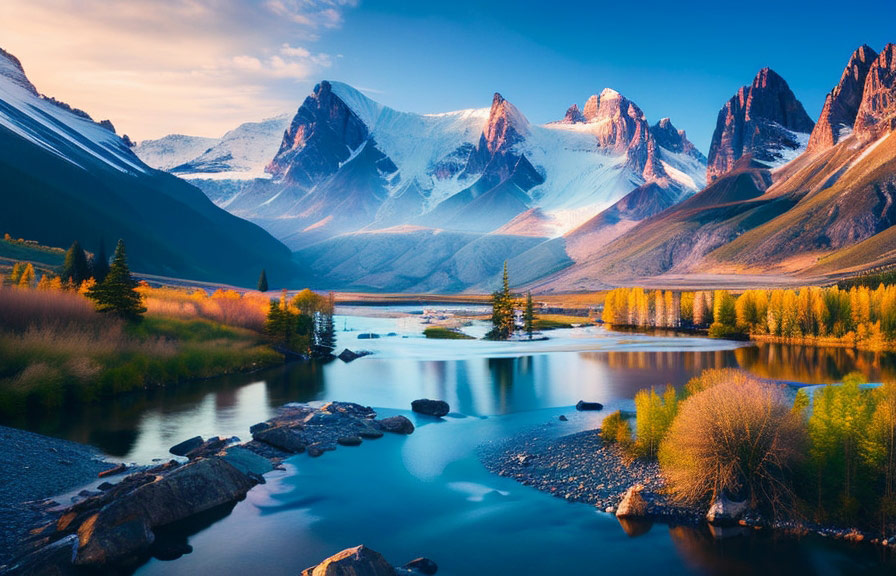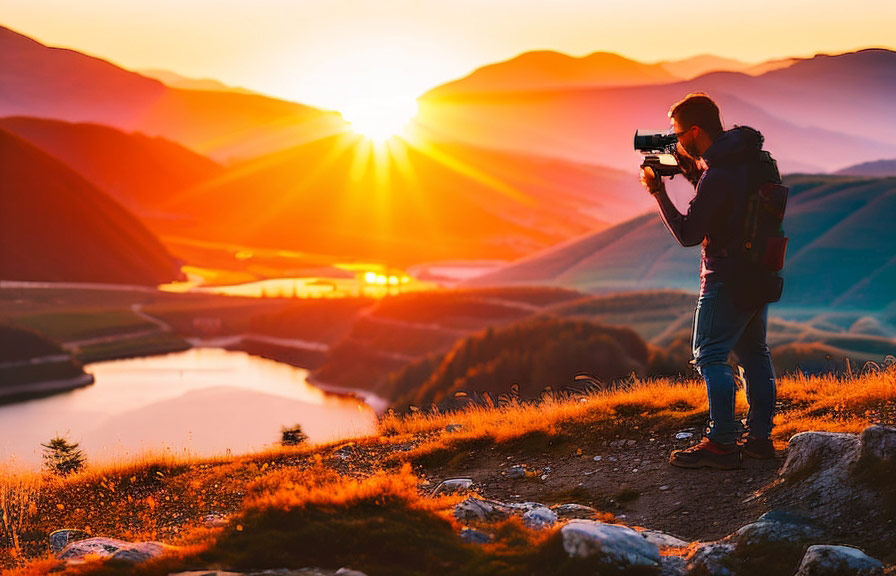Did you know that the word "landscape" is derived from the dutch word "landschap," which means a patch of cultivated ground? today, landscape photography is an art form that captivates millions of people around the world.
In this post, we will explore how to take stunning landscape photos by focusing on three key aspects: finding the perfect location, mastering lighting techniques, and enhancing your images through editing. so, buckle up, and let's dive into the world of landscape photography!

A world of wonders: finding the perfect landscape photography location
The first step to capturing a breathtaking landscape photograph is to find an inspiring location. here are some tips to help you scout out your next photographic adventure:
1. Research: utilize resources like photography blogs, social media, and travel websites to find beautiful destinations and hidden gems. keep an eye out for seasonal changes, like autumn foliage or spring wildflowers, to add an extra layer of beauty to your images.
2. Local knowledge: tap into the knowledge of local photographers, park rangers, or even fellow travelers. they may have insider tips about lesser-known spots or the best times to visit popular locations.
3. Map it out: use tools like google earth, topographic maps, and satellite imagery to scout potential locations and plan your shots. look for interesting elements like rivers, mountains, or unique geological formations to include in your composition.
4. Time it right: consider visiting locations during the golden hour (the hour after sunrise and the hour before sunset) or the blue hour (the hour before sunrise and after sunset) for optimal lighting conditions.
Illuminate the scene: mastering lighting techniques for landscape photography
Now that you've found your perfect location, it's time to focus on lighting. here are some tips to help you capture the perfect balance of light and shadow in your landscape photos:
1. Natural light: make use of the sun's natural light by planning your shoot around the golden hour or blue hour. these times provide soft, warm light that can enhance the colors and textures in your scene.
2. Direction of light: the direction of light can have a significant impact on your image. side lighting can create interesting shadows and bring out textures, while backlighting can create silhouettes or add a halo effect around your subject.
Experiment with different angles to find the best lighting for your scene.
3. Weather conditions: overcast days can provide soft, even lighting that's perfect for capturing details and colors. meanwhile, dramatic weather conditions, such as stormy skies or misty mornings, can add atmosphere and depth to your landscape images.
4. Use filters: consider using filters like polarizers or graduated neutral density filters (gnd) to control the amount of light entering your lens. polarizers can reduce glare and enhance colors, while gnd filters can balance the exposure between the sky and the foreground.
Enhancing your vision: editing landscape photos
Once you've captured your landscape photos, it's time to bring them to life through editing. here are some tips to help you enhance your images:
1. Raw format: shoot in raw format to preserve the most detail and have greater flexibility when editing. this will allow you to make adjustments to exposure, white balance, and color without losing image quality.
2. Crop and straighten: start by cropping your image to improve the composition and straightening the horizon if needed. remember to follow the rule of thirds or use other compositional techniques like leading lines or foreground interest.
3. Adjust exposure and contrast: fine-tune the exposure and contrast to ensure your image is well-balanced. you may need to brighten shadows, darken highlights, or increase overall contrast for a more dynamic image.
4. Enhance colors and saturation: boost the vibrancy and saturation of your image to make the colors pop. be careful not to overdo it, as overly saturated images can look unnatural.
5. Sharpen and reduce noise: apply sharpening and noise reduction techniques to enhance the details and reduce any unwanted grain or noise in your image.
6. Add creative effects: consider using editing tools to add creative effects like dodging and burning, selective color adjustments, or even black and white conversions to give your landscape photos a unique look and feel.
With these tips in hand, you're well on your way to becoming a landscape photography master. remember, practice makes perfect, so keep exploring, experimenting, and refining your skills. soon, you'll be capturing breathtaking landscape photos that will leave your viewers in awe.
Happy shooting!
